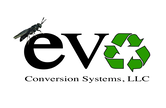|
I came across this paper today while surfing the web for new information on the BSF. I have to admit, I hadn't thought about pathogens being associated with seaweed; but, I understand the concern. Especially if someone is considering the mass-production of BSF from such material. In the end, we should all recognize that such assessments need to be made on all potential feed streams for the BSF. Here is the link for the paper, but I am not sure you will be able to access the full publication or not. Just in case, I have provided a summary below. Swinscoe, I., D. M. Oliver, A. S. Gilburn, B. Lunestad, E.-J. Lock, R. Ørnsrud, and R. S. Quilliam. Seaweed-fed black soldier fly (Hermetia illucens) larvae as feed for salmon aquaculture: assessing the risks of pathogen transfer. Journal of Insects as Food and Feed 0: 1-14. In this case, seaweed, many types are harvested from the wild or cultivated for use as livestock feed. Based on the introduction of this paper, seaweed can be surface colonized by a variety of human and fish pathogens- namely, E. coli and Listeria spp (examples of fecal indicator organisms [FIO]). Findings in the study were fairly promising: 1- FIOs were at low levels in the larvae at the time they were harvested from the seaweed. 2-Larval meal and extracted lipids were free of FIOs 3-Handling larval meal and other associated activities resulted in contamination- but processing treatments decontaminated the insect-meal. Questions to ponder: 1-What was the microbial load of the BSF used in the experiment at the time of initiation? 2-What is the shelf life of the finished product? 3-Can methods be employed to remove concerns about potential contamination after production (e.g., e-beam technology)? And, if so, is it economical and would it extend shelf life of the product? AuthorJeffery K. Tomberlin, PhD, Supportive of Developing SeaLarvae!
1 Comment
Md. Abdul Baten Rimon Akanda
7/25/2022 09:23:54 am
Hello,
Reply
Leave a Reply. |
AuthorIndividuals with over 25 years research experience with the black soldier fly. We are passionate about the science behind the black soldier fly and its ability to convert waste to protein. Get Notified Here
Archives
September 2022
Categories
All
Install an RSS app to get notified from us when a new post is up!
|
ServicesSupport |
About |

 RSS Feed
RSS Feed

